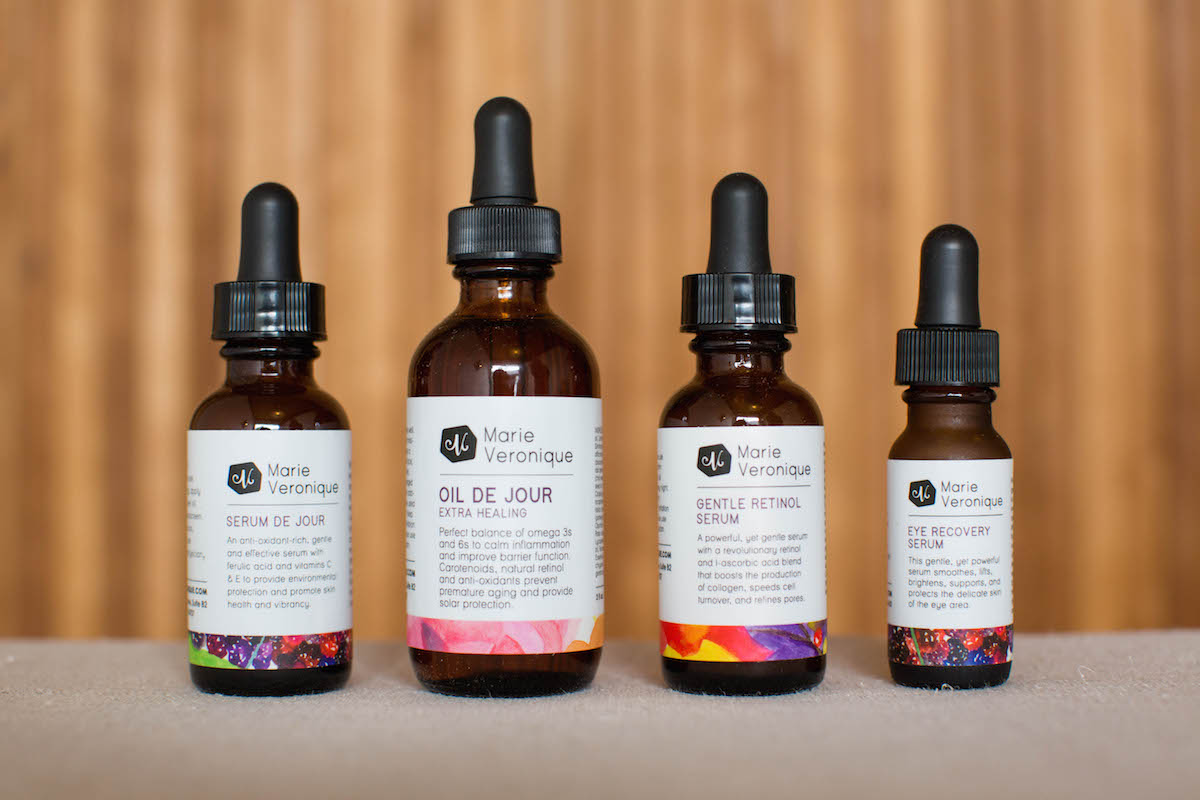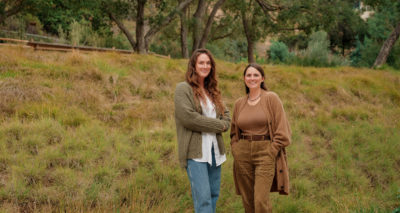Marie Veronique: The Chemist Redefining Natural Skincare
Translation missing: en.blogs.article.author_on_date_html
Wellness
Marie Veronique: The Chemist Redefining Natural Skincare
February 17, 2016

This week was all about new approaches to beauty, from the enlightening Kristina Holey’s recipes and skin detoxing tips to today’s subject, skincare formulator and expert Marie Veronique Nadeau. Coincidentally, I have my close friend Shiva Rose to thank for both introductions. During our recent session, Kristina recommended a wonderful chemist based in Berkeley who creates clean, potent formulas. Of course, she was speaking of Marie as well!
Since then I’ve been enjoying using her formulas—especially her eye serum—which blend the very best of nature with science. Marie is a woman with vast knowledge and experience whose mission is to create cutting-edge natural products that address aging at the root. I was thrilled to be able to speak with her about her process, passion and thoughts on what “organic” truly means today. I learned a lot, and I hope you do too! XXJKE
Rip&Tan: You began your career as a chemist, and 10 years ago founded your own skincare line. They’re clearly related, but what got you into chemistry initially? How did you transition into skincare?
Marie Veronique Nadeau: I got into chemistry when I went to the university and discovered I loved it! Prior to that I have memories of being one of those experimental little kids—I once set the living room on fire, perfectly innocently, and I didn’t get punished thanks to my dad. I also remember being a passionate follower of Mr. Wizard. He did these fabulous experiments on TV that I was fascinated by. They should bring Mr. Wizard back.
Rip&Tan: What inspired you to start your own brand?
MVN: The impetus for starting the company was doing what other companies did not seem to be able to get a handle on, namely making safe-to-wear products that also improved skin appearance or had some needed functionality, like a non-chemical sunscreen that prevented sun damage without irritating skin or generating free radicals.
Rip&Tan: How have you seen the word “organic” being misused or abused, and have you tried to educate consumers about what it really means?
MVN: Oh, it’s one of my missions in life. The ways in which the word organic is bent to fit marketing campaigns has made the term virtually meaningless, like “natural,” another overused term. My advice is to ignore marketing claims and know your ingredients.
A good example is organic vs. inorganic sunscreens. To a chemist, organic means carbon-based, that’s all. So an “organic” sunscreen is the one that contains chemical ingredients like oxybenzone that the EWG warns against using, especially on children, because oxybenzone may be an endocrine disruptor. Oxybenzone is a carbon-based molecule however, so it is “organic,” by definition, in contrast to “inorganic” sunscreens that use zinc oxide or titanium dioxide, i.e. ZnO and TiO2= no carbons. But a layperson could very well think that the “organic” sunscreen is the better choice. I for one am all for going back to the original meaning of the term, as the chemist would use it, and limiting its use in marketing claims because it can mislead the public into making poor choices.
Rip&Tan: Where and how do you source your ingredients?
MVN: It starts with research. Formulators are always looking for ingredients that improve functionality. I work with established labs to stay on top of new ingredients that show promise in improving effectiveness of a finished product. For plant and marine ingredients we go as close as we can to the beginning of the chain. We make many of our own extracts from raw ingredients, for example.
Rip&Tan: What is your process like when creating new products?
MVN: Research is 90 percent. It looks like a lot of sitting around, but then the other 10 percent is a lot of creating and revising in the lab. It looks like I am actually working then, but the truth is I am almost always working!
Rip&Tan: What would you consider your hero product?
MVN: The zinc-oxide only sunscreen, followed by the Gentle Retinol serum. The sunscreen has an SPF 30 rating using only zinc oxide—very hard to do. The large concentration of retinol (>5%) in GRS puts it on a level of effectiveness rivaling prescription Retin-A, but without the irritation.
Rip&Tan: Why are you personally so devoted to organic products and ingredients?
MVN: When you make a meal to remember you use the healthiest and freshest ingredients available to you—and you can certainly taste the difference between slow food and fast, processed food. The same holds true with skincare products: fresh and natural yields better results than you’ll get with large-scale, overly processed products.
Rip&Tan: What is the best thing someone can do for their skin?
MVN: Sunscreen with zinc oxide daily in winter as well as summer to prevent sun damage. Retinol at night to repair photodamage.
Rip&Tan: Do you have any advice for California residents in particular, or those who live in sunnier, drier climates?
MVN: Don’t forget your sunscreen. Those at high altitudes or where there is snow glare also are more susceptible to sunburn, so do not neglect sunscreen, even in winter.
Rip&Tan: Is it more important to use organic vs non-organic products on children? Why or why not?
MVN: It’s important that kids stay away from “organic” sunscreens (the one with oxybenzone). In general you want to limit exposure to chemicals as much as possible with young children—most of us are exposed to chemical loads that are through the roof already, and developing bodies don’t need the extra burden obtained through the use of topically applied products.
Rip&Tan: Of what accomplishment are you proudest thus far?
MVN: My work helping acne and rosacea clients improve their skin. It makes a big difference to one’s self-esteem and quality of life to have lovely, blemish-free skin. And to be able to get results without courting the serious side effects attendant on the overuse of antimicrobials and antibiotics is a big plus.
Photo: Brittany Wood









